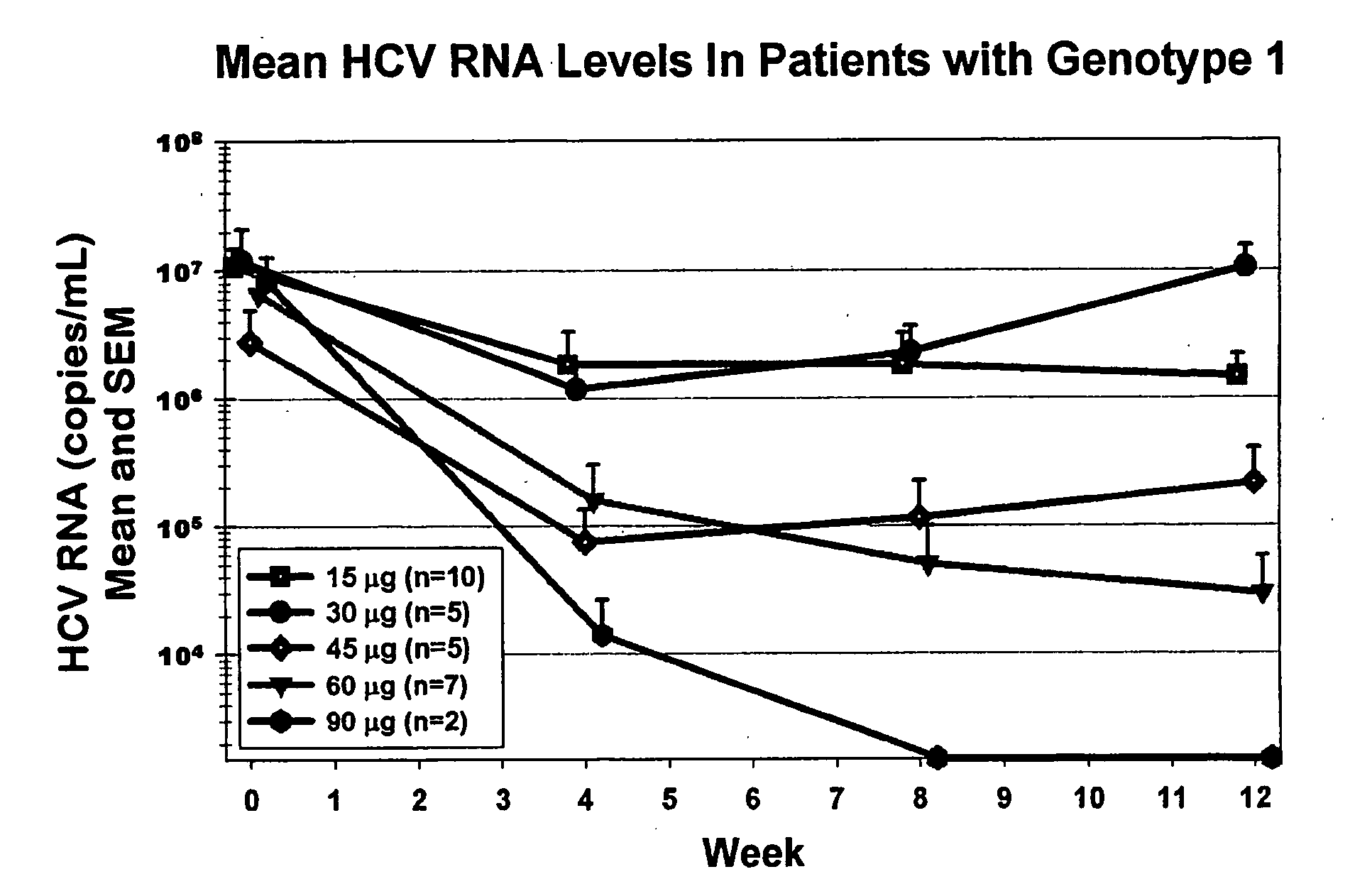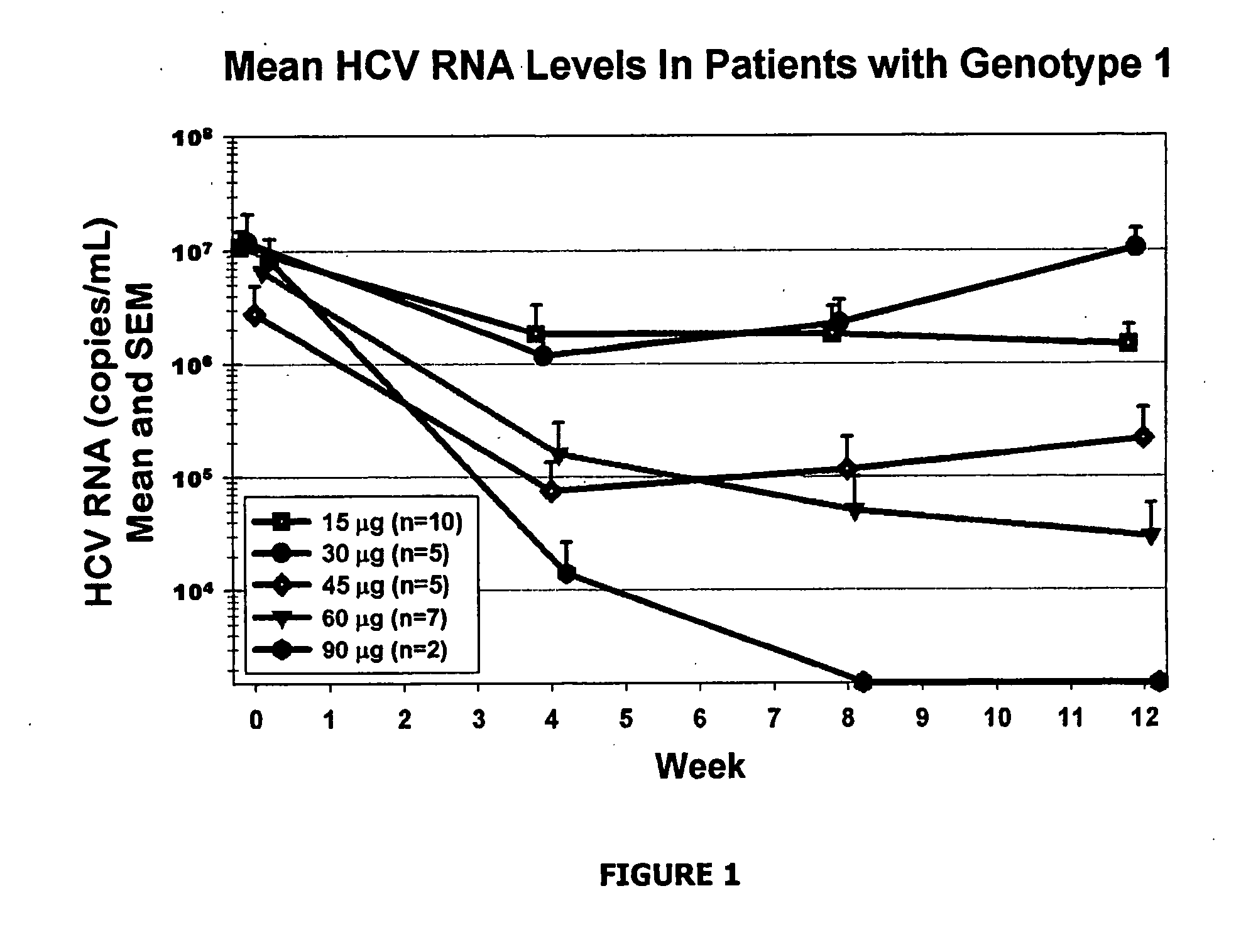Method for treating diseases with omega interferon
a technology of interferon and omega, which is applied in the direction of immunomodulatory agents, peptide/protein ingredients, immunological disorders, etc., can solve the problems of significant fraction of patients whose disease does not respond initially to antiviral or immunomodulatory therapies that are not without limitations, and the majority of patients who fail to respond to subsequent treatment with consensus interferon, etc., to achieve the effect of improving the level of disease markers
- Summary
- Abstract
- Description
- Claims
- Application Information
AI Technical Summary
Benefits of technology
Problems solved by technology
Method used
Image
Examples
example 1
[0115] The safety, tolerability, and antiviral effect of omega interferon was studied in 90 previously untreated patients who were chronically infected with hepatitis C virus of genotype 1, 2, 3, or 4. Other causes of liver dysfunction were excluded. The minimal HCV RNA level at admission was >100,000 U / mL associated with an elevated level of ALT.
[0116] The aims of this study were to evaluate the effect of different doses of omega interferon on HCV RNA levels, alanine aminotransferase (ALT) levels. Further aims were to assess the safety and tolerability of rising doses of omega interferon as judged by physical examinations, adverse side effects and laboratory examinations.
[0117] The study was designed as multi-center, open-label, and escalating dose in five cohorts of 15 or more subjects each: 15, 30, 45, 60, and 90 μg administered subcutaneously three times weekly. Therefore, the weekly doses of omega interferon in the five cohorts were 45, 90, 135, 180, and 270 μg. The cumulativ...
example 2
[0131] Omega interferon is uniquely active against the yellow fever virus. A CPE (virus-induced cytopathogenic effects)-inhibition assay procedure using vital dye uptake is employed to evaluate compounds for antiviral activity against yellow fever virus strain 17 / D in the Vero cells, an African green monkey kidney cell line. Antiviral assays are designed to test six concentrations of each compound in triplicate against the challenge virus, in this instance the yellow fever virus (YFV). Cell controls containing medium alone, virus-infected cell controls containing medium and virus, drug cytotoxicity controls containing medium and each drug concentration, reagent controls containing culture medium only (no cells), and drug calorimetric controls containing drug and medium (no cells) are run simultaneously, with the test samples.
[0132] The plates are incubated at 37° C. in a humidified atmosphere containing 5% CO2 until maximum CPE is observed in the untreated virus control cultures (D...
PUM
| Property | Measurement | Unit |
|---|---|---|
| resistance | aaaaa | aaaaa |
| time | aaaaa | aaaaa |
| size | aaaaa | aaaaa |
Abstract
Description
Claims
Application Information
 Login to View More
Login to View More - R&D
- Intellectual Property
- Life Sciences
- Materials
- Tech Scout
- Unparalleled Data Quality
- Higher Quality Content
- 60% Fewer Hallucinations
Browse by: Latest US Patents, China's latest patents, Technical Efficacy Thesaurus, Application Domain, Technology Topic, Popular Technical Reports.
© 2025 PatSnap. All rights reserved.Legal|Privacy policy|Modern Slavery Act Transparency Statement|Sitemap|About US| Contact US: help@patsnap.com


